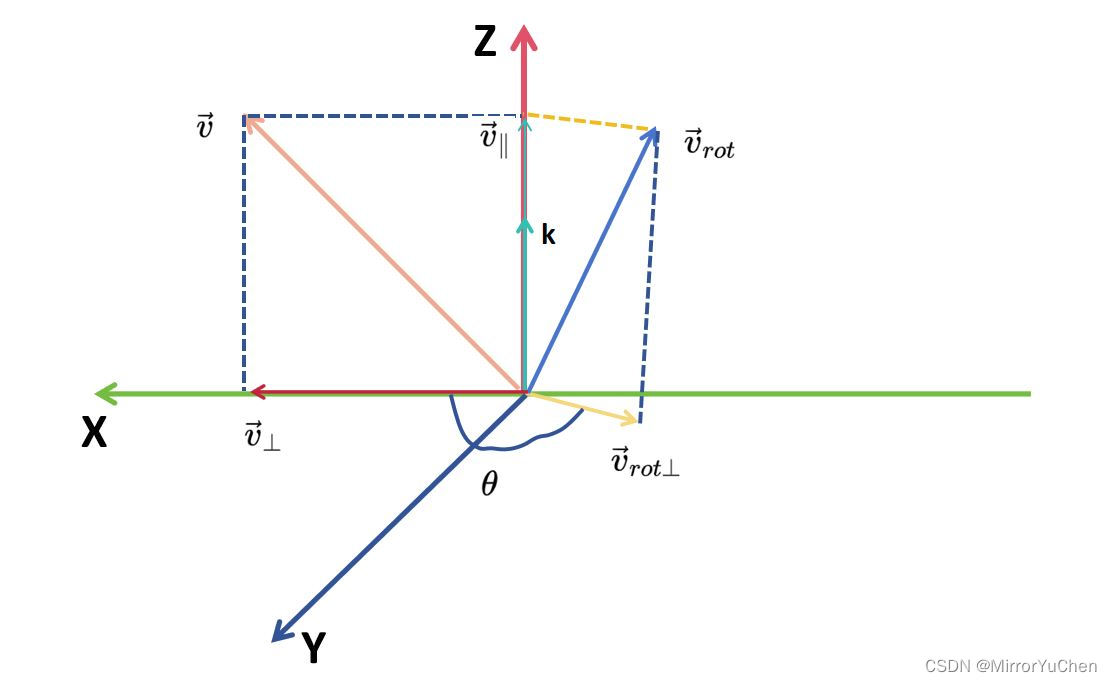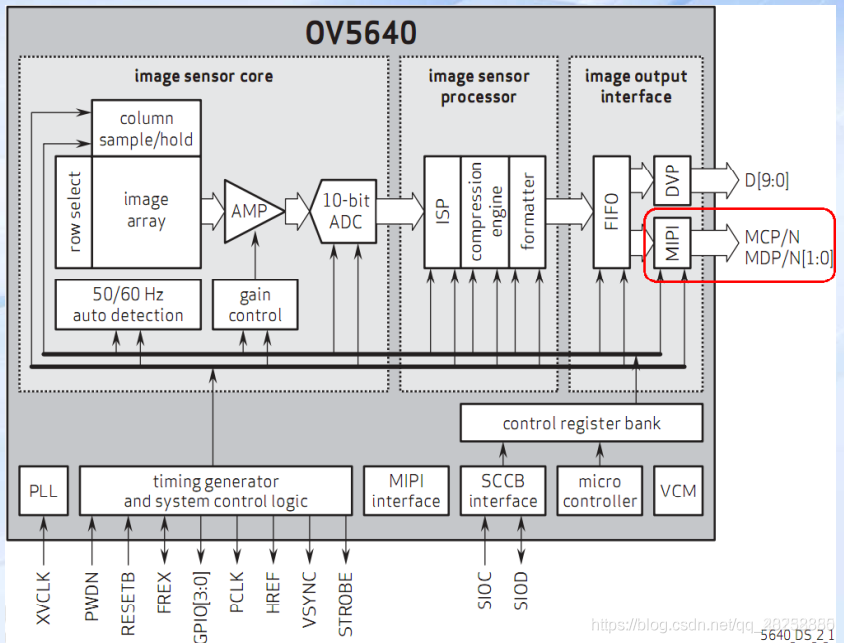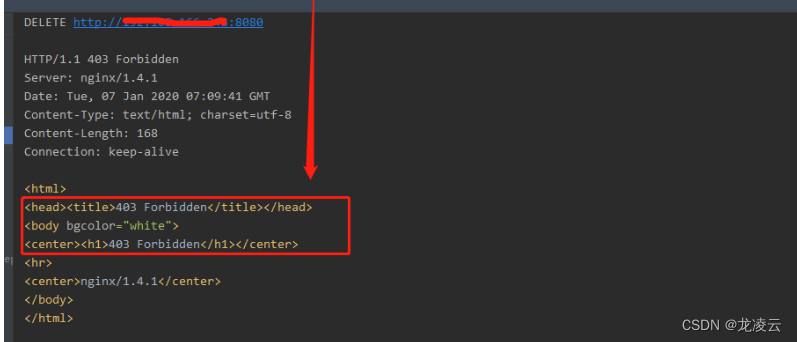
一、说明
本文主要介绍CNN中在pytorch的实现,其中MobileNet 网络,数据集来源,以及训练过程,模型生成和存储,模型调入等。
二、轻量级网络和移动网络
我们已经看到,复杂的网络需要大量的计算资源,如GPU,用于训练和快速推理。然而,事实证明,在大多数情况下,参数数量明显较少的模型仍然可以被训练为表现得相当好。换句话说,模型复杂性的增加通常会导致模型性能的小幅(非成比例)增加。
我们在模块开始时训练 MNIST 数字分类时观察到了这一点。简单密集模型的准确性并不明显低于强大的CNN。增加分类器中CNN层的数量和/或神经元的数量使我们能够获得百分之几的准确率。这让我们想到,我们可以尝试轻量级网络架构,以便训练更快的模型。如果我们希望能够在移动设备上执行我们的模型,这一点尤其重要。
该模块将依赖于我们在上一个单元中下载的猫和狗数据集。首先,我们将确保数据集可用。
!wget https://raw.githubusercontent.com/MicrosoftDocs/pytorchfundamentals/main/computer-vision-pytorch/pytorchcv.py
import torch
import torch.nn as nn
import torchvision
import matplotlib.pyplot as plt
from torchinfo import summary
import os
from pytorchcv import train, display_dataset, train_long, load_cats_dogs_dataset, validate, common_transform
if not os.path.exists('data/kagglecatsanddogs_5340.zip'):
!wget -P data -q https://download.microsoft.com/download/3/E/1/3E1C3F21-ECDB-4869-8368-6DEBA77B919F/kagglecatsanddogs_5340.zip
dataset, train_loader, test_loader = load_cats_dogs_dataset()
三、移动网络
在上一个单元中,我们已经看到了用于图像分类的 ResNet 架构。ResNet的更轻量级模拟是MobileNet,它使用所谓的倒置残差块。让我们加载预先训练的移动网络,看看它是如何工作的:
model = torch.hub.load('pytorch/vision:v0.13.0', 'mobilenet_v2', weights='MobileNet_V2_Weights.DEFAULT')
model.eval()
print(model)
MobileNetV2(
(features): Sequential(
(0): ConvBNReLU(
(0): Conv2d(3, 32, kernel_size=(3, 3), stride=(2, 2), padding=(1, 1), bias=False)
(1): BatchNorm2d(32, eps=1e-05, momentum=0.1, affine=True, track_running_stats=True)
(2): ReLU6(inplace=True)
)
(1): InvertedResidual(
(conv): Sequential(
(0): ConvBNReLU(
(0): Conv2d(32, 32, kernel_size=(3, 3), stride=(1, 1), padding=(1, 1), groups=32, bias=False)
(1): BatchNorm2d(32, eps=1e-05, momentum=0.1, affine=True, track_running_stats=True)
(2): ReLU6(inplace=True)
)
(1): Conv2d(32, 16, kernel_size=(1, 1), stride=(1, 1), bias=False)
(2): BatchNorm2d(16, eps=1e-05, momentum=0.1, affine=True, track_running_stats=True)
)
)
(2): InvertedResidual(
(conv): Sequential(
(0): ConvBNReLU(
(0): Conv2d(16, 96, kernel_size=(1, 1), stride=(1, 1), bias=False)
(1): BatchNorm2d(96, eps=1e-05, momentum=0.1, affine=True, track_running_stats=True)
(2): ReLU6(inplace=True)
)
(1): ConvBNReLU(
(0): Conv2d(96, 96, kernel_size=(3, 3), stride=(2, 2), padding=(1, 1), groups=96, bias=False)
(1): BatchNorm2d(96, eps=1e-05, momentum=0.1, affine=True, track_running_stats=True)
(2): ReLU6(inplace=True)
)
(2): Conv2d(96, 24, kernel_size=(1, 1), stride=(1, 1), bias=False)
(3): BatchNorm2d(24, eps=1e-05, momentum=0.1, affine=True, track_running_stats=True)
)
)
(3): InvertedResidual(
(conv): Sequential(
(0): ConvBNReLU(
(0): Conv2d(24, 144, kernel_size=(1, 1), stride=(1, 1), bias=False)
(1): BatchNorm2d(144, eps=1e-05, momentum=0.1, affine=True, track_running_stats=True)
(2): ReLU6(inplace=True)
)
(1): ConvBNReLU(
(0): Conv2d(144, 144, kernel_size=(3, 3), stride=(1, 1), padding=(1, 1), groups=144, bias=False)
(1): BatchNorm2d(144, eps=1e-05, momentum=0.1, affine=True, track_running_stats=True)
(2): ReLU6(inplace=True)
)
(2): Conv2d(144, 24, kernel_size=(1, 1), stride=(1, 1), bias=False)
(3): BatchNorm2d(24, eps=1e-05, momentum=0.1, affine=True, track_running_stats=True)
)
)
(4): InvertedResidual(
(conv): Sequential(
(0): ConvBNReLU(
(0): Conv2d(24, 144, kernel_size=(1, 1), stride=(1, 1), bias=False)
(1): BatchNorm2d(144, eps=1e-05, momentum=0.1, affine=True, track_running_stats=True)
(2): ReLU6(inplace=True)
)
(1): ConvBNReLU(
(0): Conv2d(144, 144, kernel_size=(3, 3), stride=(2, 2), padding=(1, 1), groups=144, bias=False)
(1): BatchNorm2d(144, eps=1e-05, momentum=0.1, affine=True, track_running_stats=True)
(2): ReLU6(inplace=True)
)
(2): Conv2d(144, 32, kernel_size=(1, 1), stride=(1, 1), bias=False)
(3): BatchNorm2d(32, eps=1e-05, momentum=0.1, affine=True, track_running_stats=True)
)
)
(5): InvertedResidual(
(conv): Sequential(
(0): ConvBNReLU(
(0): Conv2d(32, 192, kernel_size=(1, 1), stride=(1, 1), bias=False)
(1): BatchNorm2d(192, eps=1e-05, momentum=0.1, affine=True, track_running_stats=True)
(2): ReLU6(inplace=True)
)
(1): ConvBNReLU(
(0): Conv2d(192, 192, kernel_size=(3, 3), stride=(1, 1), padding=(1, 1), groups=192, bias=False)
(1): BatchNorm2d(192, eps=1e-05, momentum=0.1, affine=True, track_running_stats=True)
(2): ReLU6(inplace=True)
)
(2): Conv2d(192, 32, kernel_size=(1, 1), stride=(1, 1), bias=False)
(3): BatchNorm2d(32, eps=1e-05, momentum=0.1, affine=True, track_running_stats=True)
)
)
(6): InvertedResidual(
(conv): Sequential(
(0): ConvBNReLU(
(0): Conv2d(32, 192, kernel_size=(1, 1), stride=(1, 1), bias=False)
(1): BatchNorm2d(192, eps=1e-05, momentum=0.1, affine=True, track_running_stats=True)
(2): ReLU6(inplace=True)
)
(1): ConvBNReLU(
(0): Conv2d(192, 192, kernel_size=(3, 3), stride=(1, 1), padding=(1, 1), groups=192, bias=False)
(1): BatchNorm2d(192, eps=1e-05, momentum=0.1, affine=True, track_running_stats=True)
(2): ReLU6(inplace=True)
)
(2): Conv2d(192, 32, kernel_size=(1, 1), stride=(1, 1), bias=False)
(3): BatchNorm2d(32, eps=1e-05, momentum=0.1, affine=True, track_running_stats=True)
)
)
(7): InvertedResidual(
(conv): Sequential(
(0): ConvBNReLU(
(0): Conv2d(32, 192, kernel_size=(1, 1), stride=(1, 1), bias=False)
(1): BatchNorm2d(192, eps=1e-05, momentum=0.1, affine=True, track_running_stats=True)
(2): ReLU6(inplace=True)
)
(1): ConvBNReLU(
(0): Conv2d(192, 192, kernel_size=(3, 3), stride=(2, 2), padding=(1, 1), groups=192, bias=False)
(1): BatchNorm2d(192, eps=1e-05, momentum=0.1, affine=True, track_running_stats=True)
(2): ReLU6(inplace=True)
)
(2): Conv2d(192, 64, kernel_size=(1, 1), stride=(1, 1), bias=False)
(3): BatchNorm2d(64, eps=1e-05, momentum=0.1, affine=True, track_running_stats=True)
)
)
(8): InvertedResidual(
(conv): Sequential(
(0): ConvBNReLU(
(0): Conv2d(64, 384, kernel_size=(1, 1), stride=(1, 1), bias=False)
(1): BatchNorm2d(384, eps=1e-05, momentum=0.1, affine=True, track_running_stats=True)
(2): ReLU6(inplace=True)
)
(1): ConvBNReLU(
(0): Conv2d(384, 384, kernel_size=(3, 3), stride=(1, 1), padding=(1, 1), groups=384, bias=False)
(1): BatchNorm2d(384, eps=1e-05, momentum=0.1, affine=True, track_running_stats=True)
(2): ReLU6(inplace=True)
)
(2): Conv2d(384, 64, kernel_size=(1, 1), stride=(1, 1), bias=False)
(3): BatchNorm2d(64, eps=1e-05, momentum=0.1, affine=True, track_running_stats=True)
)
)
(9): InvertedResidual(
(conv): Sequential(
(0): ConvBNReLU(
(0): Conv2d(64, 384, kernel_size=(1, 1), stride=(1, 1), bias=False)
(1): BatchNorm2d(384, eps=1e-05, momentum=0.1, affine=True, track_running_stats=True)
(2): ReLU6(inplace=True)
)
(1): ConvBNReLU(
(0): Conv2d(384, 384, kernel_size=(3, 3), stride=(1, 1), padding=(1, 1), groups=384, bias=False)
(1): BatchNorm2d(384, eps=1e-05, momentum=0.1, affine=True, track_running_stats=True)
(2): ReLU6(inplace=True)
)
(2): Conv2d(384, 64, kernel_size=(1, 1), stride=(1, 1), bias=False)
(3): BatchNorm2d(64, eps=1e-05, momentum=0.1, affine=True, track_running_stats=True)
)
)
(10): InvertedResidual(
(conv): Sequential(
(0): ConvBNReLU(
(0): Conv2d(64, 384, kernel_size=(1, 1), stride=(1, 1), bias=False)
(1): BatchNorm2d(384, eps=1e-05, momentum=0.1, affine=True, track_running_stats=True)
(2): ReLU6(inplace=True)
)
(1): ConvBNReLU(
(0): Conv2d(384, 384, kernel_size=(3, 3), stride=(1, 1), padding=(1, 1), groups=384, bias=False)
(1): BatchNorm2d(384, eps=1e-05, momentum=0.1, affine=True, track_running_stats=True)
(2): ReLU6(inplace=True)
)
(2): Conv2d(384, 64, kernel_size=(1, 1), stride=(1, 1), bias=False)
(3): BatchNorm2d(64, eps=1e-05, momentum=0.1, affine=True, track_running_stats=True)
)
)
(11): InvertedResidual(
(conv): Sequential(
(0): ConvBNReLU(
(0): Conv2d(64, 384, kernel_size=(1, 1), stride=(1, 1), bias=False)
(1): BatchNorm2d(384, eps=1e-05, momentum=0.1, affine=True, track_running_stats=True)
(2): ReLU6(inplace=True)
)
(1): ConvBNReLU(
(0): Conv2d(384, 384, kernel_size=(3, 3), stride=(1, 1), padding=(1, 1), groups=384, bias=False)
(1): BatchNorm2d(384, eps=1e-05, momentum=0.1, affine=True, track_running_stats=True)
(2): ReLU6(inplace=True)
)
(2): Conv2d(384, 96, kernel_size=(1, 1), stride=(1, 1), bias=False)
(3): BatchNorm2d(96, eps=1e-05, momentum=0.1, affine=True, track_running_stats=True)
)
)
(12): InvertedResidual(
(conv): Sequential(
(0): ConvBNReLU(
(0): Conv2d(96, 576, kernel_size=(1, 1), stride=(1, 1), bias=False)
(1): BatchNorm2d(576, eps=1e-05, momentum=0.1, affine=True, track_running_stats=True)
(2): ReLU6(inplace=True)
)
(1): ConvBNReLU(
(0): Conv2d(576, 576, kernel_size=(3, 3), stride=(1, 1), padding=(1, 1), groups=576, bias=False)
(1): BatchNorm2d(576, eps=1e-05, momentum=0.1, affine=True, track_running_stats=True)
(2): ReLU6(inplace=True)
)
(2): Conv2d(576, 96, kernel_size=(1, 1), stride=(1, 1), bias=False)
(3): BatchNorm2d(96, eps=1e-05, momentum=0.1, affine=True, track_running_stats=True)
)
)
(13): InvertedResidual(
(conv): Sequential(
(0): ConvBNReLU(
(0): Conv2d(96, 576, kernel_size=(1, 1), stride=(1, 1), bias=False)
(1): BatchNorm2d(576, eps=1e-05, momentum=0.1, affine=True, track_running_stats=True)
(2): ReLU6(inplace=True)
)
(1): ConvBNReLU(
(0): Conv2d(576, 576, kernel_size=(3, 3), stride=(1, 1), padding=(1, 1), groups=576, bias=False)
(1): BatchNorm2d(576, eps=1e-05, momentum=0.1, affine=True, track_running_stats=True)
(2): ReLU6(inplace=True)
)
(2): Conv2d(576, 96, kernel_size=(1, 1), stride=(1, 1), bias=False)
(3): BatchNorm2d(96, eps=1e-05, momentum=0.1, affine=True, track_running_stats=True)
)
)
(14): InvertedResidual(
(conv): Sequential(
(0): ConvBNReLU(
(0): Conv2d(96, 576, kernel_size=(1, 1), stride=(1, 1), bias=False)
(1): BatchNorm2d(576, eps=1e-05, momentum=0.1, affine=True, track_running_stats=True)
(2): ReLU6(inplace=True)
)
(1): ConvBNReLU(
(0): Conv2d(576, 576, kernel_size=(3, 3), stride=(2, 2), padding=(1, 1), groups=576, bias=False)
(1): BatchNorm2d(576, eps=1e-05, momentum=0.1, affine=True, track_running_stats=True)
(2): ReLU6(inplace=True)
)
(2): Conv2d(576, 160, kernel_size=(1, 1), stride=(1, 1), bias=False)
(3): BatchNorm2d(160, eps=1e-05, momentum=0.1, affine=True, track_running_stats=True)
)
)
(15): InvertedResidual(
(conv): Sequential(
(0): ConvBNReLU(
(0): Conv2d(160, 960, kernel_size=(1, 1), stride=(1, 1), bias=False)
(1): BatchNorm2d(960, eps=1e-05, momentum=0.1, affine=True, track_running_stats=True)
(2): ReLU6(inplace=True)
)
(1): ConvBNReLU(
(0): Conv2d(960, 960, kernel_size=(3, 3), stride=(1, 1), padding=(1, 1), groups=960, bias=False)
(1): BatchNorm2d(960, eps=1e-05, momentum=0.1, affine=True, track_running_stats=True)
(2): ReLU6(inplace=True)
)
(2): Conv2d(960, 160, kernel_size=(1, 1), stride=(1, 1), bias=False)
(3): BatchNorm2d(160, eps=1e-05, momentum=0.1, affine=True, track_running_stats=True)
)
)
(16): InvertedResidual(
(conv): Sequential(
(0): ConvBNReLU(
(0): Conv2d(160, 960, kernel_size=(1, 1), stride=(1, 1), bias=False)
(1): BatchNorm2d(960, eps=1e-05, momentum=0.1, affine=True, track_running_stats=True)
(2): ReLU6(inplace=True)
)
(1): ConvBNReLU(
(0): Conv2d(960, 960, kernel_size=(3, 3), stride=(1, 1), padding=(1, 1), groups=960, bias=False)
(1): BatchNorm2d(960, eps=1e-05, momentum=0.1, affine=True, track_running_stats=True)
(2): ReLU6(inplace=True)
)
(2): Conv2d(960, 160, kernel_size=(1, 1), stride=(1, 1), bias=False)
(3): BatchNorm2d(160, eps=1e-05, momentum=0.1, affine=True, track_running_stats=True)
)
)
(17): InvertedResidual(
(conv): Sequential(
(0): ConvBNReLU(
(0): Conv2d(160, 960, kernel_size=(1, 1), stride=(1, 1), bias=False)
(1): BatchNorm2d(960, eps=1e-05, momentum=0.1, affine=True, track_running_stats=True)
(2): ReLU6(inplace=True)
)
(1): ConvBNReLU(
(0): Conv2d(960, 960, kernel_size=(3, 3), stride=(1, 1), padding=(1, 1), groups=960, bias=False)
(1): BatchNorm2d(960, eps=1e-05, momentum=0.1, affine=True, track_running_stats=True)
(2): ReLU6(inplace=True)
)
(2): Conv2d(960, 320, kernel_size=(1, 1), stride=(1, 1), bias=False)
(3): BatchNorm2d(320, eps=1e-05, momentum=0.1, affine=True, track_running_stats=True)
)
)
(18): ConvBNReLU(
(0): Conv2d(320, 1280, kernel_size=(1, 1), stride=(1, 1), bias=False)
(1): BatchNorm2d(1280, eps=1e-05, momentum=0.1, affine=True, track_running_stats=True)
(2): ReLU6(inplace=True)
)
)
(classifier): Sequential(
(0): Dropout(p=0.2, inplace=False)
(1): Linear(in_features=1280, out_features=1000, bias=True)
)
)让我们将模型应用于我们的数据集,并确保它有效。
sample_image = dataset[0][0].unsqueeze(0) res = model(sample_image) print(res[0].argmax())
tensor(281)
结果 (281) 是 ImageNet 类号,我们在上一个单元中已经讨论过了。请注意,MobileNet 和全尺寸 ResNet 模型中的参数数量差异很大。在某些方面,MobileNet比VGG型号系列更紧凑,但精度较低。但是,参数数量的减少自然会导致模型精度有所下降。
三 使用移动网络进行迁移学习
现在,让我们执行与上一单元相同的迁移学习过程,但使用MobileNet。首先,让我们冻结模型的所有参数:
for x in model.parameters():
x.requires_grad = False
然后,替换最终分类器。我们还将模型传输到默认训练设备(GPU 或 CPU):
device = 'cuda' if torch.cuda.is_available() else 'cpu'
model.classifier = nn.Linear(1280,2)
model = model.to(device)
summary(model,input_size=(1,3,244,244))========================================================================================== Layer (type:depth-idx) Output Shape Param # ========================================================================================== ├─Sequential: 1-1 [1, 1280, 8, 8] -- | └─ConvBNReLU: 2-1 [1, 32, 122, 122] -- | | └─Conv2d: 3-1 [1, 32, 122, 122] (864) | | └─BatchNorm2d: 3-2 [1, 32, 122, 122] (64) | | └─ReLU6: 3-3 [1, 32, 122, 122] -- | └─InvertedResidual: 2-2 [1, 16, 122, 122] -- | | └─Sequential: 3-4 [1, 16, 122, 122] (896) | └─InvertedResidual: 2-3 [1, 24, 61, 61] -- | | └─Sequential: 3-5 [1, 24, 61, 61] (5,136) | └─InvertedResidual: 2-4 [1, 24, 61, 61] -- | | └─Sequential: 3-6 [1, 24, 61, 61] (8,832) | └─InvertedResidual: 2-5 [1, 32, 31, 31] -- | | └─Sequential: 3-7 [1, 32, 31, 31] (10,000) | └─InvertedResidual: 2-6 [1, 32, 31, 31] -- | | └─Sequential: 3-8 [1, 32, 31, 31] (14,848) | └─InvertedResidual: 2-7 [1, 32, 31, 31] -- | | └─Sequential: 3-9 [1, 32, 31, 31] (14,848) | └─InvertedResidual: 2-8 [1, 64, 16, 16] -- | | └─Sequential: 3-10 [1, 64, 16, 16] (21,056) | └─InvertedResidual: 2-9 [1, 64, 16, 16] -- | | └─Sequential: 3-11 [1, 64, 16, 16] (54,272) | └─InvertedResidual: 2-10 [1, 64, 16, 16] -- | | └─Sequential: 3-12 [1, 64, 16, 16] (54,272) | └─InvertedResidual: 2-11 [1, 64, 16, 16] -- | | └─Sequential: 3-13 [1, 64, 16, 16] (54,272) | └─InvertedResidual: 2-12 [1, 96, 16, 16] -- | | └─Sequential: 3-14 [1, 96, 16, 16] (66,624) | └─InvertedResidual: 2-13 [1, 96, 16, 16] -- | | └─Sequential: 3-15 [1, 96, 16, 16] (118,272) | └─InvertedResidual: 2-14 [1, 96, 16, 16] -- | | └─Sequential: 3-16 [1, 96, 16, 16] (118,272) | └─InvertedResidual: 2-15 [1, 160, 8, 8] -- | | └─Sequential: 3-17 [1, 160, 8, 8] (155,264) | └─InvertedResidual: 2-16 [1, 160, 8, 8] -- | | └─Sequential: 3-18 [1, 160, 8, 8] (320,000) | └─InvertedResidual: 2-17 [1, 160, 8, 8] -- | | └─Sequential: 3-19 [1, 160, 8, 8] (320,000) | └─InvertedResidual: 2-18 [1, 320, 8, 8] -- | | └─Sequential: 3-20 [1, 320, 8, 8] (473,920) | └─ConvBNReLU: 2-19 [1, 1280, 8, 8] -- | | └─Conv2d: 3-21 [1, 1280, 8, 8] (409,600) | | └─BatchNorm2d: 3-22 [1, 1280, 8, 8] (2,560) | | └─ReLU6: 3-23 [1, 1280, 8, 8] -- ├─Linear: 1-2 [1, 2] 2,562 ========================================================================================== Total params: 2,226,434 Trainable params: 2,562 Non-trainable params: 2,223,872 Total mult-adds (M): 196.40 ========================================================================================== Input size (MB): 0.71 Forward/backward pass size (MB): 20.12 Params size (MB): 8.91 Estimated Total Size (MB): 29.74 ==========================================================================================
现在让我们进行实际培训:
train_long(model,train_loader,test_loader,loss_fn=torch.nn.CrossEntropyLoss(),epochs=1,print_freq=90)
Epoch 0, minibatch 0: train acc = 0.5, train loss = 0.02309325896203518 Epoch 0, minibatch 90: train acc = 0.9443681318681318, train loss = 0.006317565729329874 Epoch 0, minibatch 180: train acc = 0.9488950276243094, train loss = 0.00590015182178982 Epoch 0, minibatch 270: train acc = 0.9492619926199262, train loss = 0.006072205810969167 Epoch 0, minibatch 360: train acc = 0.9500519390581718, train loss = 0.00641324315374908 Epoch 0, minibatch 450: train acc = 0.9494872505543237, train loss = 0.006945275943189397 Epoch 0, minibatch 540: train acc = 0.9521141404805915, train loss = 0.0067323536617257896 Epoch 0 done, validation acc = 0.98245, validation loss = 0.002347727584838867
四、结语
请注意,MobileNet 的精度几乎与 VGG-16 相同,只是略低于满量程 ResNet。小型模型(如MobileNet或ResNet-18)的主要优点是它们可以在移动设备上使用。
V笔记本



















